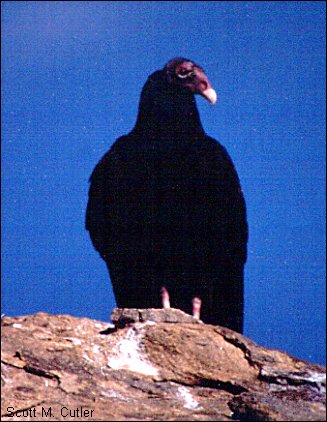
Many things that animals do in nature seem, to our human perceptions, to be disgusting. Who hasn't encountered a dog freshly perfumed with something dead and rotten and very happy about it? Seems like there ought to be a good reason for such behavior, but that's going to take some thinking.
Another animal's dubious behavior, though, turns out to make good
biological sense. Turkey Vultures are familiar to most desert dwellers. You might
notice that sometimes they seem to have reddish legs and other times white. If
you're especially attuned, you might note that this is temperature related. Birds,
like mammals, have a problem keeping cool when the air temperature is high. The
vulture's approach to cooling is not for the delicate. That whitish leg color that
appears with summer temperatures is left over from the evaporation of an almost-liquid
mixture of waste materials from the bird's kidneys and digestive tract. On the same
principle as our swamp coolers, evaporation of the liquid cools the blood coursing
through the legs. Indelicate, perhaps, but quite efficient.

Contributor: Arthur H. Harris, Laboratory for Environmental Biology, Centennial Museum, University of Texas at El Paso.
Desert Diary is a joint production of the Centennial Museum and KTEP National Public Radio at the University of Texas at El Paso.

A Turkey Vulture at its roost. The reddish legs show clearly; the white stains from waste materials on the rocks would be deposited on the legs in hot weather. Photograph by Scott M. Cutler.
Welty, J. C. 1982. The life of birds. 3rd ed., Saunders College Publishing, Philadelphia. 754 pp.